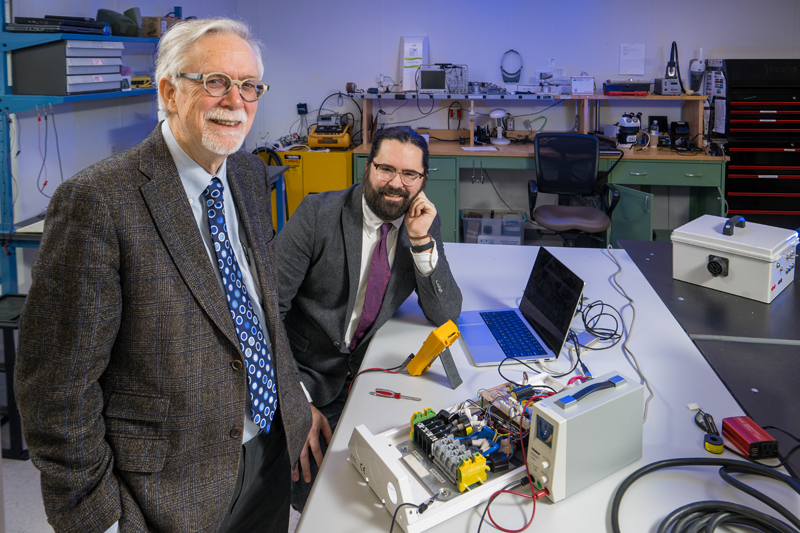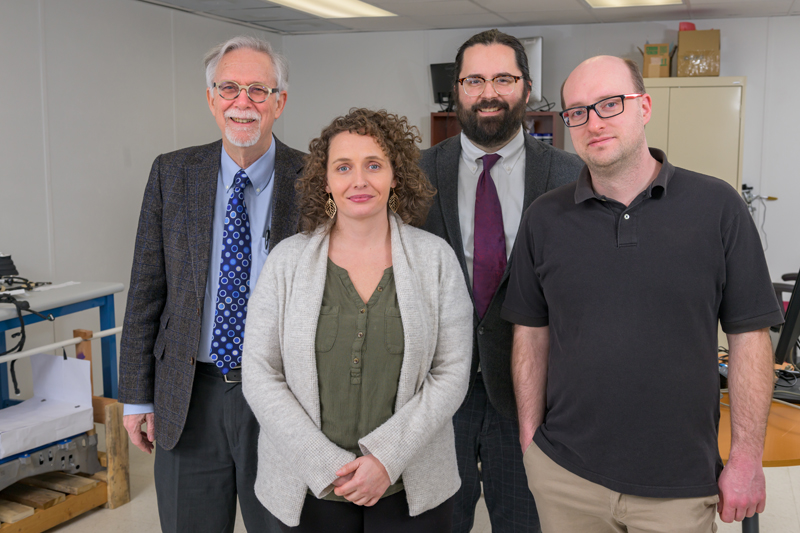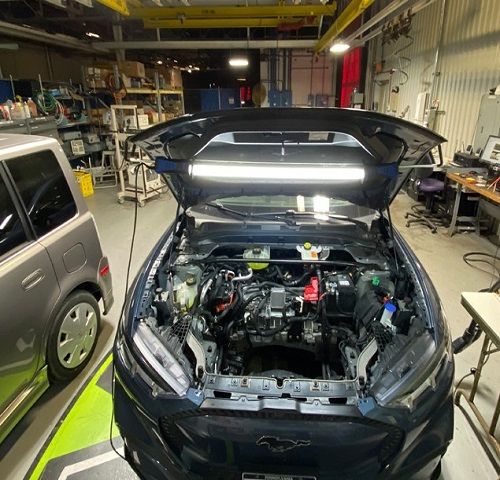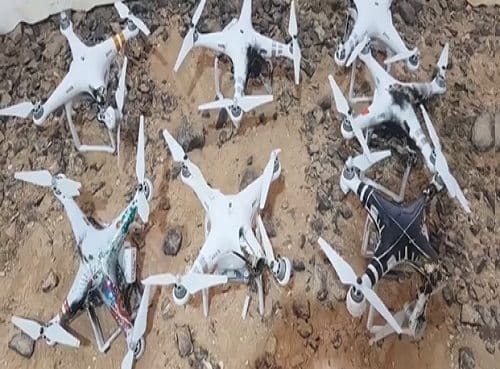America’s highways and byways would be a wild west if we didn’t have automotive standards. So, give some serious respect, please, to these massive documents filled with painstaking technical specifications. After all, they determine how your car operates, its safety features, what parts it can use, and how it fuels or recharges — and that’s just the short list.
Especially for technology in its infancy such as electric vehicles (EVs), the enactment of a new standard can usher in major improvements for drivers. Indeed, the two newest standards for electric cars, both approved this month by standards committees of SAE International (formerly the Society of Automotive Engineers), should bring EV drivers great joy, according to Willett Kempton, professor at the University of Delaware’s Center for Transportation Electrification on UD’s Science, Technology and Advanced Research (STAR) Campus.
Center director Rodney McGee was chairman of the two SAE committees, while postdoctoral researcher Garrett Ejzak, Kempton and administrative assistant Becky Cox played key roles in the engineering, research and policy work undergirding the new EV standards.
“These developments mark a big shift for the EV industry,” said Kempton, who is affiliated with research centers in both the College of Earth, Ocean and Environment and the College of Engineering at UD. “Drivers will gain access to more charging stations and lower-cost charging. They will have new options for using their EV to help fight climate change and even make money when plugged in. These changes are likely to spur even greater adoption of EVs for clean, affordable transportation.”
Your EV as a money maker and backup power source
What lies ahead for EV owners? The so-called “V2G standard” (SAE J3068) provides the missing link for widespread use of vehicle-to-grid (V2G) technology, which Kempton and his colleagues invented at the University of Delaware more than two decades ago.
“We’ve been doing V2G for 20 years here at the University of Delaware, wondering when the rest of the world would catch on,” Kempton said. “One key missing piece has been a complete standard for controlling and managing V2G, which now exists within SAE J3068.”

V2G allows you to plug your EV into an electrical outlet and send power from the car battery back to your local energy utility, making a little income while helping the nation’s power grid. This is becoming increasingly more important as more renewable sources of energy come online. When the sun isn’t shining or the wind isn’t blowing, EV owners can plug in and “perform important energy-balancing services,” according to Kempton.
The savings from V2G can add up.
“Our V2G demonstrations show an EV can earn between $100 a year and $1,500 a year. The wide variation is due to different markets and to regulations in different utilities. It also depends on the EV’s capabilities,” Kempton explained.
Current EVs need a substantial update or retrofit to be able to do V2G, while new EVs equipped with the signaling technology are expected to be available by 2025.
Three documents make up the report for SAE J3068, and each document is more than 70 pages long. Postdoctoral researcher Garrett Ejzak explored and wrote many of the technical descriptions, and administrative assistant Becky Cox handled the data entry, formatting and document maintenance.
Other improvements conferred by this standard involve alternating current (AC) charging technology. Typically used for EV charging at home, AC will provide drivers with lower-cost charging in public spaces, from the workplace to shopping centers.
The J3068 standard also lets the EV and charging station exchange unique IDs.
“What this means for drivers is that AC charging will be more likely to work correctly, be of lower cost, and be able to determine which car or account to use automatically when you plug in, not needing a credit-card swipe or a call to an 800 number before you can charge,” Kempton said.

This standard also will make it possible to use your EV as backup power for your house. As extreme weather increases with climate change, that’s a good energy reserve to have when the lights go out.
It takes one-and-a-half kilowatts to power the average house, Kempton said. Your electric car can produce 80 kilowatts of power, enough to run a whole house and more.
“So, your EV can both help fight climate change and keep your house going when extreme storms happen,” Kempton said.
The Tesla connector for all
With SAE J3400 now approved, the connector system Tesla developed for EV charging will now be standardized and can be included on future EVs of any brand. The first non-Tesla cars with this technology, also known as the North American Standard Connector, are expected to hit the market in 2025.
“This will eliminate Tesla’s monopoly on their charging stations, making them available for use by any new EV,” Kempton said.
According to Statista, the U.S. had more than 53,000 public EV charging stations and over 138,000 public charging outlets in May 2023.
“More than half the on-road chargers are made by Tesla,” McGee added, “which until now has meant that only Tesla EVs can use them.”
To have the Tesla connector standardized, SAE, the standards organization, needed an objective, trusted expert. They called on McGee.
“It’s Rodney’s reputation — he understands EV charging inside out, and he knows all the related electrical and EV standards,” Kempton said. “Plus, in a committee among highly competitive automakers, Rodney as chairman was an independent voice. He was trusted to steer the committee toward low-cost, best engineered solutions, not favoring one company’s legacy solution over another’s.”
McGee, who earned his doctorate at UD working with Kempton, has been a voting member at SAE for several years and was nominated to chair both EV standards committees — a huge undertaking involving more than 150 representatives from auto companies and parts companies, charging stations and government agencies, plenty of meetings, and thousands of details.
His job: Try to address whatever concerns were raised, arbitrate discussions and find a consensus among the group.
“It involves leadership and lots of phone calls,” McGee said. “It’s solving technical problems. It’s being a good communicator, listening, analyzing and synthesizing information into technical language. It involves being a decent writer and being able to do drawings.”
McGee said he has always been intrigued by both research and policy, moving what happens in the lab out into use in the real world.
His dad was an electrician at UD, and McGee followed in his footsteps to a point. He got lured into research on EVs, pursuing his doctorate in electrical and computer engineering. But he is also a licensed professional engineer (P.E.) and knows how to wire a house.
“New technologies require generalists, widely multidisciplinary people,” McGee said. “One reason I was drawn to this work is because it allows me to explore the intersections of two very different industries.”
So, even if future EV drivers have never heard of standards “SAE J3068” or “SAE J3400,” in the next few years, they will find more and more types of charging stations that will charge their car, that charging stations work more reliably, and when parked overnight or at work, their EV may even help balance the electric grid while they are paid for doing that.
Source: udel










